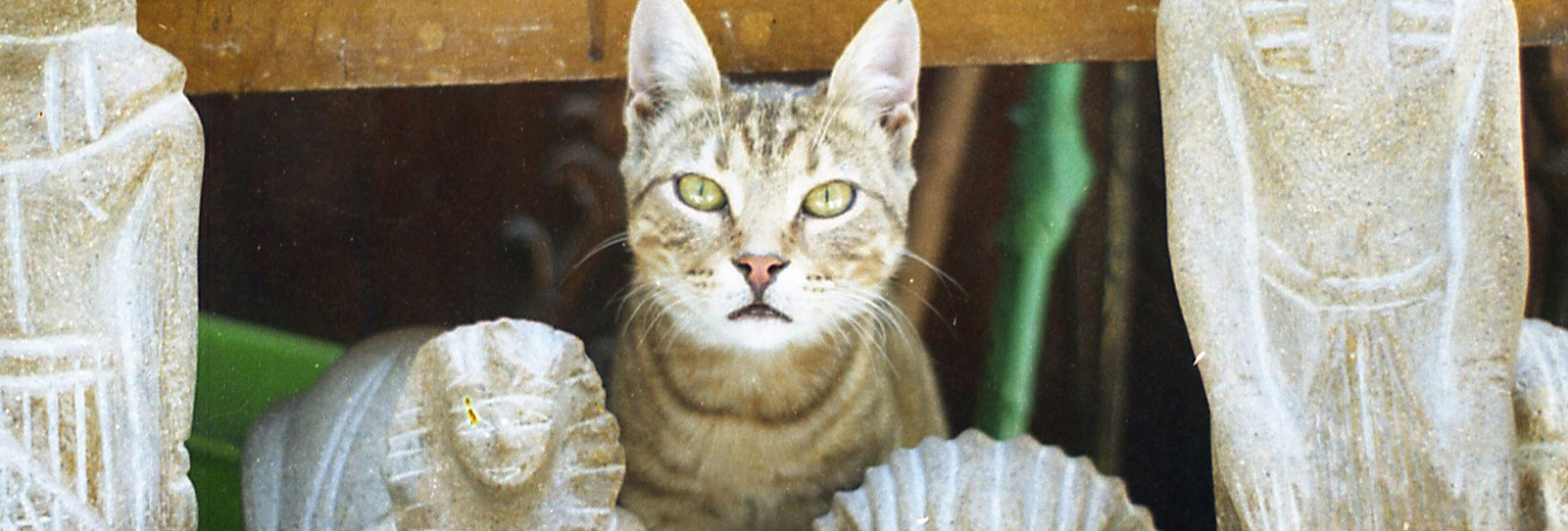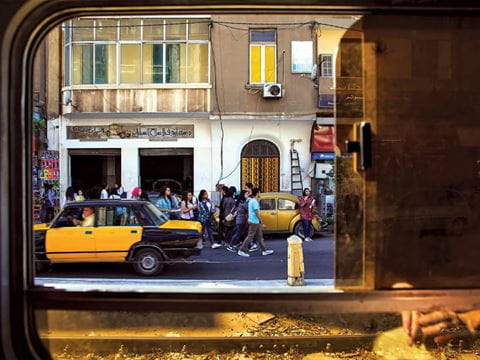
FirstLook: Cairo Cat
Since Pharaonic times, thousands of cats have appeared in Egyptian iconography and literature. Today Cairo, they pad and paw their way everywhere, even staring down the camera of photographer Lorraine Chittock.
In any town or city, there are always plenty of reminders that we humans are not the only inhabitants. This is particularly true in Cairo, thanks in great part to cats, who seem to pad and paw their way everywhere. And they have been doing this in Egypt since Pharaonic times, when they were mummified and solemnly interred by the thousands, and the goddess Bastet was depicted first as a lioness and, later, as a domestic cat. Cats have appeared in Egyptian iconography, poetry and literature for millennia, up to modern times.
This tabby, who frequented a tourist shop near Fishawi’s Café, a favorite of Nobel Prize-winning author Naguib Mahfouz, acted like she knew all this history by heart. As she pranced over the souvenir sphinxes, Nefertitis and Tuts, I could sense her almost demanding her portrait be taken. I complied. She stared down the camera as if she had been studying the stone faces around her all her life.
—Lorraine Chittock www.CairoCats.com
This tabby, who frequented a tourist shop near Fishawi’s Café, a favorite of Nobel Prize-winning author Naguib Mahfouz, acted like she knew all this history by heart. As she pranced over the souvenir sphinxes, Nefertitis and Tuts, I could sense her almost demanding her portrait be taken. I complied. She stared down the camera as if she had been studying the stone faces around her all her life.
—Lorraine Chittock www.CairoCats.com
You may also be interested in...

Orion Through a 3D-Printed Telescope
Arts
With his homemade telescope, Astrophotographer Zubuyer Kaolin brings the Orion Nebula close to home.
How to Discover Egypt From the Inside Out
Arts
Rather than just telling travelers where to go, the guidebook Egypt: Inside Out by Trevor Naylor offers an inside-out perspective that evokes the experience of being there, inviting readers to embrace an almost meditative travel discipline of slowing down to take in the details and complexities of Egypt, moment by moment.
Spotlight on Photography: Relive the 1980 Grand Prix Through Michael Turner's Racing Photos
Arts
Amid the roar of racers zooming toward the finish line in London during the 1980 Grand Prix, longtime auto-racing photographer and renowned artist Michael Turner trained his lens on a Saudia-Williams FW 07.